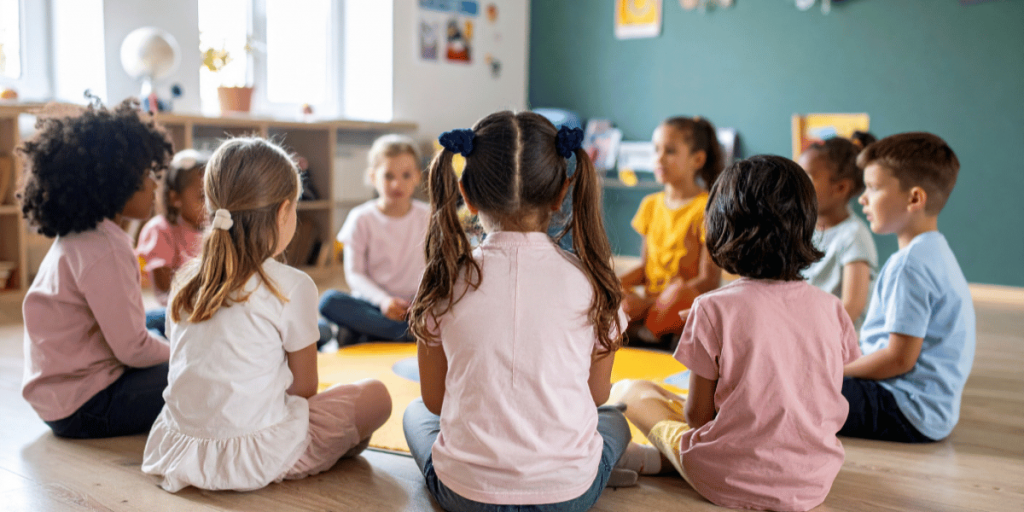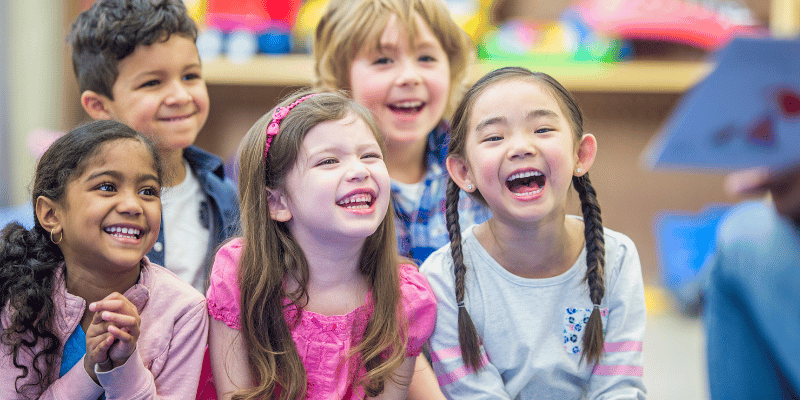This content was last updated on July 9, 2025
This blog is presented by Twin Science, a global education technology company empowering educators with AI-powered learning solutions.
Cemile Göçmen | Mathematics Teacher, Hadiye Kuradacı Science and Art Center
No matter the time or place, where there are children, there is always play. Through play—by touching, seeing, smelling, and hearing—children experience life in the most joyful form of learning: learning by doing. They express their experiences, desires, and emotions through play. Play allows children to explore themselves and plays a major role in shaping their character and personality. Within play, children naturally acquire the knowledge, skills, and experiences they need for life.
As a thinking activity through experimentation, play offers faster and more lasting learning compared to other techniques, as it includes time limits and rules. Using this powerful nature of play to design classroom activities is an undeniably effective way to make learning enjoyable. Classroom activities help reinforce learned concepts and allow for repetition in a relaxed setting. They also equip students with skills in both individual and group work. When classroom activities are well-designed, level-appropriate, and rich in content, they help develop a range of skills in students: critical thinking, communication, research, problem-solving, multifaceted thinking, use of information technologies, entrepreneurship, proper and effective use of language, classification, planning, self-control, quick decision-making, adaptability, assertiveness, task-sharing, self-critique, association, and evaluation.
It is also essential that teachers actively monitor the process, show interest, allocate sufficient time, and skillfully turn mistakes into learning opportunities within the play itself. Let’s explore a few fun classroom activities together…
Contact our team to learn more about Twin’s award-winning learning approach.
1 – CHAIN

This activity is ideal for building rapport among students. Ask students to form a circle. Each student, when it’s their turn, repeats the names of the previous students while maintaining eye contact, starting from the teacher’s name. When the chain is complete, volunteers can be asked to repeat the entire chain. This is a great icebreaker that creates a warm and safe classroom environment.
Burak
Burak, Ali
Burak, Ali, Aslı
Burak, Ali, Aslı, Kerem
…
After the chain is completed, you can ask the students that volunteered to repeat their names. You’ll see smiles on students’ faces—proof of a great start!
2- SPACESHIP
This game enhances deduction skills and rule discovery.
The teacher invites students on a space journey, but only items that start with the same letter as the student’s name are allowed on the spaceship. Students try to figure out the hidden pattern by comparing accepted and rejected items. It becomes even more fun when students who solve the pattern begin exaggerating their item choices.
The game continues until everyone solves the pattern and finds an item. It’s especially fun when students who’ve figured it out playfully keep it secret from the rest.
3- ATOM

A brilliant blend of physical movement, science understanding, and group dynamics.
Students stand in an open space. The teacher explains that they are all atoms moving freely in space, and their speed depends on temperature—higher temperatures mean faster movement, and lower temperatures mean slower. Atoms can also bond to form molecules under the right conditions. After explaining the scientific background, the teacher directs the game. Students move freely like atoms. When the teacher calls out a temperature, students speed up or slow down accordingly. At various points, the teacher asks them to form molecules of a specific number of atoms.
It’s not just fun—it’s also a great way to form small working groups for the next activity.
4- The Knot

This activity strengthens communication, strategy, and teamwork.
Students close their eyes and each hold hands with two different students, forming a human knot. Without letting go, they must strategize and work together to untangle and form a circle. A delight to watch for any teacher!
Support STEM and AI literacy in the classroom through collaborative learning. Contact us to see how your students can thrive in an AI-powered world.
5- Spot the Difference

Ideal for enhancing observation, attention, and memory.
This activity works for all age groups and can be played in pairs or small teams. Place at least 10 distinct objects on a wide surface—choose items that are visually detailed and varied. Allow students 1 minute to observe. Then, one partner leaves the room while the other changes one object’s position or appearance. The partner returns and must guess the change in a single try.
6- Landlord / Tenant

A lively, social game filled with laughter.
This game requires at least 13 participants and a wide area. Pairs of students link hands to form “houses” spaced evenly apart. Other students stand between their linked arms, acting as “tenants.” One player (the “it” person) stands in the center and doesn’t have a house.
When the teacher calls “landlord,” tenants stay put, and landlords must quickly find a new house, pairing up with different tenants. When “tenant” is called, tenants rush to a new house while landlords remain still. The player who fails to find a house becomes the new “it.”
7- Geo – Robot
A fun engineering activity that reinforces STEM and design thinking.
Before starting, ensure geometric solids (cone, sphere, pyramid, cube, prisms, etc.) have been introduced. Remind students of the shapes’ features, then provide one sample of each. Ask them to build robots using all the shapes shown. They can decorate the robots however they want to. Use Twin Science modules to add a waving motion—ignite your little engineers’ imagination!
Conclusion: Build the Future with Classroom Activities
Students who learn by doing and playing don’t just shape today—they shape tomorrow. Discover how Twin’s future-ready classrooms are transforming learning—get in touch.




